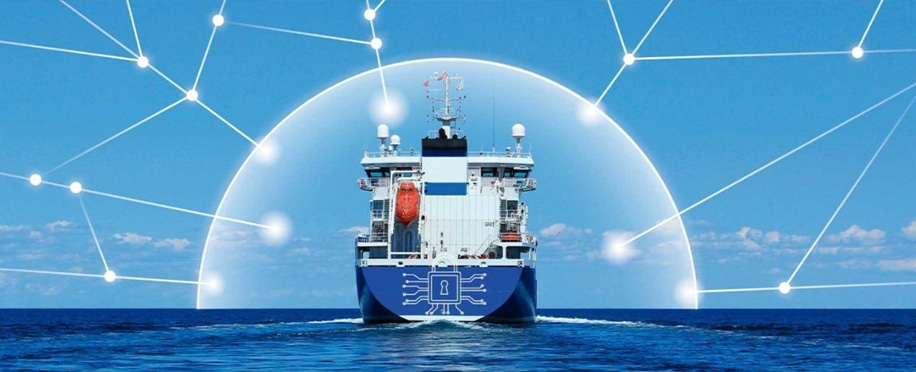Copyright © 2025 lmitac.com All Rights Reserved. Contact - Terms and Conditions - Privacy Policy - Quality Policy - Become an instructor - Vacancies - Sitemap
London Maritime Academy is a trade name for London Premier Groupversion: 2.9.0
London Maritime Academy is a trade name for London Premier Group

Posted on : 6/7/2023, 9:13:50 PM
Maritime security has become the most popular buzzword in the shipping industry, and it’s no surprise why. With new security threats, cyber-attacks and growing chances of piracy, the need for better global maritime security is more important than ever.
Maritime security (marsec for short) is generally used to describe the strategy and law used to protect any fleet or ship against any internal or external threat; this concept goes beyond shipping and cargo to include fisheries, navy ships and other vessels.
In this article, you’ll find a comprehensive guide to maritime security technologies, their importance and some of the popular technologies used in 2023.
During the last decade, there have been many cited incidents of cyberattacks on vessels in the ocean across the globe, including China, South Asia, the European nations and the US.
In fact, according to the International Shipping & Cybersecurity webinar in 2021, statistics have shown a 400% increase in attempted cyberattacks in the maritime sector since February 2020. In particular, attacks on operational technology (OT) on ships have increased by 900%.
These numbers have only proven a growing need to develop cybersecurity strategies and protocols within the maritime industry.
But how do these attacks happen?
According to the ISO/IEC 27001 standards for information security management systems (ISMS), a breach in defence of any infrastructure can happen through three major levels, known as the CIA triad: confidentiality, Information integrity and data availability.
For example, malicious attempts might occur to hack into the ship's private information; this is a breach of confidentiality. Similarly, some data might get lost through the transportation process, jeopardising the integrity of the ship's information.
To combat these challenges in the vessel's safety and prevent future issues, shipping companies are using new technologies to enhance the level of protection and offer guidance and assistance to ships when required.
There are two types of technologies generally used in maritime security, these are:
Operational technologies are physical technologies used in maritime security to protect the physical components of ships; some of these include:
This technology is used for data analysis and management in the maritime security domain, such as:
Operational technologies (OT) and informational technologies (IT) play different roles in maritime security. OT addresses the physical technologies used in maritime security, such as sensors, cameras, and communication systems.
At the same time, IT focuses on the digital technologies used to manage and analyse data, such as cybersecurity and data analytics tools. OT is used to monitor and control physical processes to ensure the safety and security of ships and ports; attacks in this field can cause a loss of assets, forces and lives.
In comparison, IT manages and analyses data from these processes, identifies potential security threats, and provides real-time situational awareness to authorities. It’s safe to say that both these technologies play a significant role in maritime security; that’s why companies need to create an interdisciplinary approach that can combine both technologies to guarantee the excellence of their security program.
Learning about the new technologies of maritime security through articles or Maritime security training courses is the way to stay ahead of the curve of success in the field; here are a few of the modern technologies used in the maritime security domain:
First, AIS technology enables marine vessels to broadcast their identity, position, navigation course, and speed and provide other relevant information to other ships and coast-based authorities. The importance of the role of AIS in maritime security shows through the fact that it’s automated and does not require human interference, thus limiting the possibility of human error or attacks.

AIS can also be used to monitor compliance with national regulations such as the International Convention for the Safety of Life at Sea (SOLAS), the International Ship and Port Facility Security (ISPS) Code, and the International Maritime Organization (IMO) regulations of environmental protection.
By monitoring AIS transmissions, authorities can ensure that vessels comply with these regulations and take necessary enforcement measures, decreasing the risk of piracy and other potential threats.
In maritime security, ECDIS is critical in enhancing maritime situational awareness (MSA), reducing the risk of marine incidents, and safeguarding against collisions or accidents. Moreover, ECDIS can monitor vessel movements and detect suspicious behaviour patterns, which can help authorities identify and respond to security threats such as piracy, smuggling, and illegal fishing.
However, ECDIS could be more foolproof and can be subject to errors and malfunctions. That’s why it's crucial to guard against any threats and ensure that ship crews are trained to use ECDIS technology correctly and that backup navigation systems are available in case of ECDIS failure.
Maritime security technologies have played a vital part in safeguarding ships and other vessels. As a result, many countries have adopted these technologies in their Maritime Security Program (MSP), which maintains a fleet of commercially viable, militarily useful merchant ships active in international trade to support and provide shipping services across oceans using up-to-date technologies.